#balbec
Text
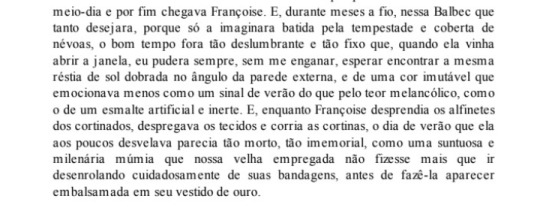
0 notes
Photo

{moment of being} Les petites filles modèles à Balbec #seashore #beach #plage #horizon #landscape #shadowline #cabourg #normandie #balbec #proust #proustspirit #sophiedesegur #segur #comtessedesegur #petitesfillesmodeles #lespetitesfillesmodeles #playwrightslife #poetslife #momentsofbeing #springtime #clouds #promenade #waterfront @villedecabourg @cabourgtourisme @festivaldecabourg (à Promenade Marcel Proust) https://www.instagram.com/p/CeI9mkRgvRU-Z989BHwMc3muxIT0RyDci6Nm4k0/?igshid=NGJjMDIxMWI=
#seashore#beach#plage#horizon#landscape#shadowline#cabourg#normandie#balbec#proust#proustspirit#sophiedesegur#segur#comtessedesegur#petitesfillesmodeles#lespetitesfillesmodeles#playwrightslife#poetslife#momentsofbeing#springtime#clouds#promenade#waterfront
0 notes
Text
And just as people pay a hundred francs a day for a room at the Hotel at Balbec in order to breathe the sea air, I felt it to be quite natural that I should spend more than that upon her since I had her breath upon my cheek, between her lips which I parted with my own, through which her life flowed against my tongue.
— Marcel Proust, The Captive
7 notes
·
View notes
Text
Akşam yemeği saatinde, restoranlar dolu oluyordu; sokaktan geçerken, izne çıktığı için sürekli ölüm tehlikesinden altı günlüğüne kurtulmuş, siperlere dönmek üzere olan zavallı bir askerin bir an durup aydınlık camekanlara baktığını görürsem, Balbec Oteli'nde balıkçıların bizi akşam yemeğinde seyrettiği zamanki gibi ıstırap çekiyordum; ama ıstırabım daha büyüktü, çünkü askerin sefaletinin, yoksulunkinden fazla olduğunu, sefaletin her türlüsünü içinde barındırdığını biliyordum; askerin sefaletinde ayrıca daha fazla tevekkül, daha fazla asalet vardı, savaşa dönmek üzere olan asker, itişip kakışarak bir masa kapmaya çalışan uyanıkları görünce, nefret duymadan, filozofça · başını sallayarak, “Savaş buraya hiç uğramamış sanki,” dediği için, daha da dokunaklıydı.
-Proust, Yakalanan Zaman
9 notes
·
View notes
Link
Thanks for including “Earth Shaker” on your playlist Tinnitist.
17 notes
·
View notes
Text
Catherine
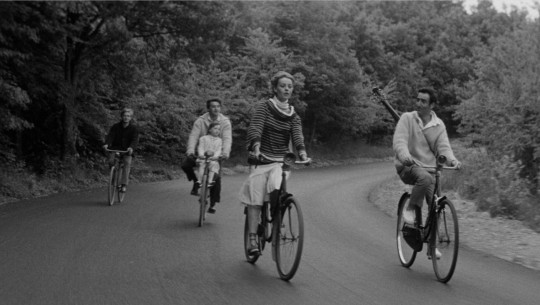
Only two short scenes show Catherine on a bike. She is however so deeply connected to those very fleeting moments so much as they embodied the loving young and free nature of the caracter and more generally of the French Nouvelle Vague.
Jules et Jim are friends. Jules and Catherine are together. Catherine and Jim will be too one day. Shortly after their encounter marked by euphoria and lightness, the three friends decide to go to the sea. They settle in an “isolated and a little bit formal” big white house and go to the beach by bike. “Not this one Jim, isn’t it” said softly his friend and he accepted the situation out of friendship. It is only during those trips and hiding by the speed that Jim allows himself to contemplate the back of Catherine's neck. The First World War begin and separate the two friends. The years go by, Jules and Caterine get married and see Jim one day again. “[Then] they continued their big conversation”. The three lovers and friends like each other and with new found joy, they ride their bikes again.
Born at the end of the 18th century, the bicycle was at first an amusing object of curiosity reserved for the aristocracy and the bourgeoisie. Some of them travel the roads of France and Europe with discret effort and combining by this way patriotism and modernity. From the beginning, the bicycle allowed people to roam the land and to widen their horizons. Thereafter it became the instrument of emancipation of a whole social category, that is the youth.
At the beginning of the 20th century, when there was still no place for young people to go other than the shade of a hedge or the bend in a meadow, the bicycle made everything possible. The brief escape, the friendly complicity, the gateway far from the glance of parents.
The bicycle permitted not only the appropriation and the conquest of new spaces by the moving of a body to another place but also by the transformation of this body. The leg becomes more muscular, slender and stretched. The gaze rises to explore more widely and to embrace the horizon. The whole silhouette grows. A new human species is born, product of the grafting of sport on the old torso of an aristocracy and an industrial and commercial bourgeoisie.
And Catherine is part of these mutants who spread the trouble in the physical and social space at the beginning of this century. The machine, with wheels or not, shapes the body but also the mentalities. Women replaced men who had gone to the war in the factory and, out of pragmatism, they cut their hair in order to use the mechanical equipments safely: the cogs could indeed swallow it! In Cutting It Short, Maryska - those insane young people! - "sacrifices" her long blond hair, which was the admiration of all the inhabitants of her small Bohemian town, in order to better use her bicycle. Short hair in the air, these expressions of modernity pose as queen.
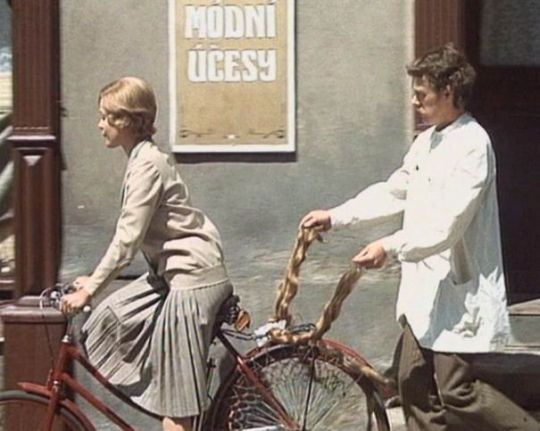
Welcome to the age of aerodynamics. The healthy body moves with precision, skill and safety, balance and stability. This control of movement is acquired on a bicycle. By pedaling with a straight back, arms stretched over the handlebars, the cyclist accustoms her body to maintaining her center of gravity by eliminating unnecessary and parasitic gesticulations. The traditional awkwardness of the young girl disappears for whom the body is an object of difficulty: physical embarrassment and moral discomfort. The cyclist walks looking straight ahead, like on a bicycle, and this bodily and social ease has something shameless and insolent for the others. Yes, these athletic confident young girls in flower spread trouble both emotionally and in gender. On the one hand, the bike reveals the curves of the spindly legs, trapping the girls in the desiring gaze of men. On the other hand it frees their gender-restricted movements. The young girls ride their bicycles along the Balbec seawall, disrupting the codes of propriety. They play with the rules and, armed with their sulphurous modesty, explore the social limits - oh my ...! - by flirting with each other. Some see them as inverts. Right... but wouldn't they be above all young casual teenagers, eager to test the others gaze, their power of seduction? In short, happy to give free rein to their spontaneous curiosity!
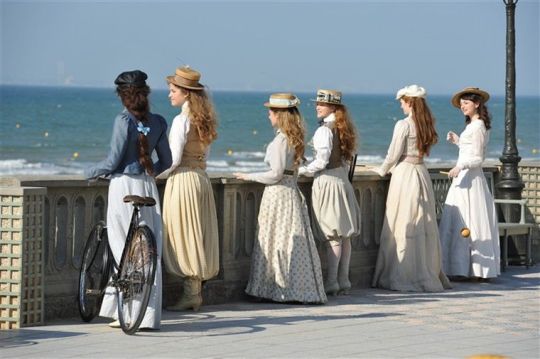
Catherine is for me the heiress of the young girls in flower. There is this striking moment when, with a perfectly natural gesture, she disguises herself as Thomas the Baker Street Boy and wins the "street test": a man calls out to her "Monsieur" to ask for a light. The scene ends with a memorable speed race between Jules, Jim and "Thomas": the latter cheats and starts before the others, the speed galvanizes his concentrated face and he/she shouts with joy, happy with her victory and her prank. The borders between the genders are porous and it produces a new kind of friendship between young men and women who share a common condition youth and of which the bicycle is the revealing symptom.
More than a century separates Catherine and I, yet all these experiences are familiar to me.
Lucile Zheng-Launay
3 notes
·
View notes
Text
Reading a text cited by Stendhal (but not written by him) I find Proust in one minute detail. The Bishop of Lescars refers to the niece of his vicar-general in a series of affected apostrophes (My little niece, my little friend, my lovely brunette, ah, delicious little morsel!) which remind me of the way the two post girls at the Grand Hôtel at Balbec, Marie Geneste and Céleste Albaret, address the narrator (Oh, the little black-haired devil, oh, tricky little devil! Ah, youth! Ah, lovely skin!). Elsewhere, but in the same way, in Flaubert, it is the blossoming apple trees of Normandy which I read according to Proust. I savor the sway of formulas, the reversal of origins, the ease which brings the anterior text out of the subsequent one. I recognize that Proust’s work, for myself at least, is the reference work, the general mathesis, the mandala of the entire literary cosmogony––as Mme de Sévigné’s letters were for the narrator’s grandmother, tales of chivalry for Don Quixote, etc.; this does not mean that I am in any way a Proust “specialist”: Proust is what comes to me, not what I summon up; not an “authority,” simply a circular memory. Which is what the inter-text is: the impossibility of living outside the infinite text––whether this text be Proust or the daily newspaper or the television screen: the book creates the meaning, the meaning creates life.
roland barthes, the pleasure of the text trans. richard miller, 1975
16 notes
·
View notes
Note
Tooth and Claw, Persuasion, The Princess Bride & LM Montgomery 🤍
Thank you for asking, angel!!
I will try not to make these answers all about Proust but it will be highly difficult, because his work encompass every human feeling, thought and emotion possible.
Tooth and Claw: what obscure book do you wish more people would read?
Eichmann in Jerusalem: A Report on the Banality of Evil by Hannah Arendt.
Persuasion: what's the saddest book or scene you've ever read?
It's in Proust's Recherche. The book is Sodome et Gomorrah, it has a section which is called Les Intermittences du Cœur. For a while Proust considered calling the whole seven books collection by this name, because of the power it had in the narration, but eventually it stayed just a part inside of Sodome et Gomorrah. In the story, Marcel has gone to Balbec for the first time by himself. He usually went with his grandmother, for whom he had a special, extraordinary love. But she died and time has passed, and he goes to the seaside again, but he's alone now. It is when he's about to untie the laces of his boots that he actually realizes that she is gone, forever, that he would never see her again nor hear her voice, nor she would read him the books she usually read to him. It is shattering, how he has gone on with his life as if in a daze in terms of his grandmother's death, not thinking about it, but then a simple gesture (which she, not him, usually made in the past) makes him understand how eternal her absence will be. All this is described in such curated detail, a sadness flows and drenches the printed words, making you feel the exact same complicated and almost unatterable feelings Marcel is feeling. And it is strange how this sadness is not matched when, later in the narration, he understands that Albertine, his lover, has died. The emotions are even more complex, if it is possible, but they are not so galvanizing, as if even death is tainted by jealousy. About Les Intermittences du Cœur: I was floored when I first read it. I cried for around 150 pages.
The Princess Bride: What's your favourite book to film adaptation?
I haven't read the book but I know Now, Voyager is adapted from a novel, so I'll go with that. Anna Karenina dir. Joe Wright is gorgeous too (not to mention how sexy Aaron Taylor Johnson is in this one).
L.M. Montgomery: what literary setting would you like to visit?
Méséglise in Proust's Recherche, which represents the erotic side of the novel, as opposed to the side of his childhood, and the whole of Faubourg Saint Honoré in Paris, still in the Recherche.
3 notes
·
View notes
Text
Avrei dovuto lasciare Balbec, rinchiudermi nella mia solitudine, restavi in armonia con le ultime vibrazioni della voce che, per un istante, ero riuscito a rendere innamorata, e cui non avrei dovuto chiedere altro che di non rivolgersi mai più alle mie orecchie, per paura che una nuova parola - la quale, ormai, sarebbe stata inevitabilmente diversa-potesse ferire con una dissonanza il silenzio sensitivo dove, grazie a una sorta di pedale, la tonalità della gioia sarebbe sopravvissuta a lungo dentro di me.
Marcel Proust, Sodome et Gomorrhe.
2 notes
·
View notes
Text
the peculiar pleasure which I had felt at certain moments in my life, when gazing, for instance, at the steeples of Martinville, or at certain trees along a road near Balbec, or, more simply, at the beginning of this book, when I tasted a certain cup of tea
Marcel Proust
13 notes
·
View notes
Text
"Você deveria ir à Balbec."
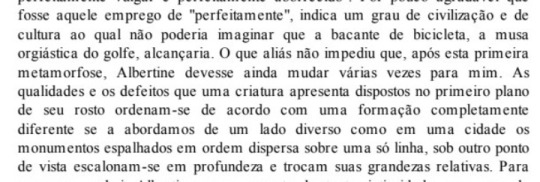
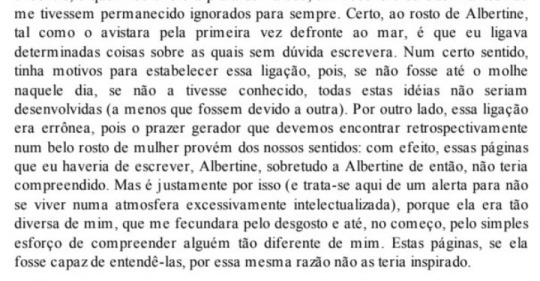
Quero reler Em Busca do Tempo Perdido.
0 notes
Text
Si prova amore, mi dicevo a Balbec, per una persona le cui azioni sembrano piuttosto essere oggetto della nostra gelosia; s’intuisce che, se le dicesse tutte, forse si guarirebbe facilmente dall’amore. Per quanto la gelosia sia facilmente celata dalla persona che la subisce, viene scoperta abbastanza in fretta da quella che la ispira e che a sua volta fa ricorso all’abilità. Tenta d’ingannarci su ciò che potrebbe renderci infelici, e ci riesce, perché chi non è avvisato non può scoprire le menzogne nascoste in una frase insignificante; non la distinguiamo dalle altre; detta con timore, è ascoltata con attenzione. Successivamente, quando saremo soli, torneremo a pensare a quella frase, che non ci sembrerà più adeguata alla realtà. Ma la ricordiamo bene? Su di essa e nell’esattezza del nostro ricordo, sembra che in noi nasca spontaneamente un dubbio del tipo di quelli che sorgono nel corso di certi stati nervosi, quando non possiamo ricordarci, alla cinquantesima volta come alla prima, se abbiamo messo il catenaccio; si direbbe che si possa ricominciare all’infinito quell’azione senza che mai sia accompagnata da un ricordo preciso e liberatore. Ma almeno possiamo richiudere la porta per la cinquantunesima volta. Mentre abbiamo sentito la frase inquietante con un ascolto incerto, e non dipende da noi poterla ripetere. Allora concentriamo la nostra attenzione su altre frasi che non nascondono niente, e l’unico rimedio, che però rifiutiamo, sarebbe ignorare tutto per non avere il desiderio di sapere di più.
Marcel Proust, Precauzione inutile
2 notes
·
View notes
Text
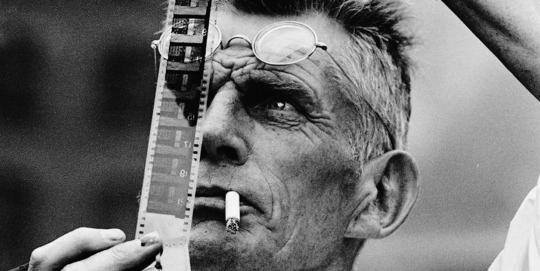
...
Alışkanlığın ölümüne örnek diye çözümlenen o ilk Balbec ziyaretinde olduğu gibi, otele bu gelişinde de bitkin ve hastadır. Ama şimdi ejderha uysallaştırılmıştır ve mağarada bir odadır. Alışkanlık yeniden örgütlenmiş, yeni bir yapı kazanmıştır - Proust'un, "bir göz kapağının tersine çevrilmesinden daha uzun ve daha zor [bir süreç ki] çevremizin ürkütücü ruhuna bizim kendi tanıdık ruhumuzun benimsetilmesidir" sözleriyle betimlediği bir işlem. Botlarının bağını çözmek için eğilir, dikkatle, kalbini yormamaya çalışarak. Birdenbire, tanrısal bir tanıdık mevcudiyetle dolar içi. İşte yine aynı şey oluyor, birkaç yıl önce benzer bir yorgunluk ve çaresizlik anında şefkatiyle ona bir anlık huzur getiren varlık onu bir kez daha canlandırıp kendine kavuşturuyordur; anneannesidir bu, o zamanki haliyle anneannesi, Champs-Elysdes'de kriz geçirdiği günden, onda adından başka kendine ait bir şey bırakmayan ve böylece ölümünü de anlatıcı için bir yabancının ölümü kadar anlamsız kılan o uğursuz kriz gününden önceki haliyle anneannesi.
Şimdi, gömülüşünden bir yıl sonra, irade-dışı belleğin gizemli etkisi sayesinde, onun ölmüş olduğunu öğreniyordur. Zamanın herhangi bir noktasında, bütünsel ruhumuz, zengin bilançosuna karşın, sadece kurgusal bir değer taşır. Aktifleri, hiçbir zaman tam olarak gerçekleştirilemez. Ama bu eğilmenin anlatıcıya iade ettiği şey, anneannesinin yitik gerçekliği değildir sadece: Kendi yitik gerçekliğini, yitik benliğinin gerçekliğini de geri almıştır. Sanki Zaman'ın şeklini sonsuz bir paraleller dizisiyle temsil etmek mümkünmüşçesine, yaşamı da bir makas hareketiyle bir başka raya aktarılmakta ve geçmişinin o uzak anından, anneannesinin onu çaresizliğinden kurtarmak için üzerine eğildiği o uzak andan başlayarak, herhangi bir sonuca bağlanmayan bir kesintisizlik içinde, öylece ilerlemektedir. Ve o uzun kesinti dönemini işaretleyen olayları, son birkaç saatin olaylarını, zihninde canlandırmaktan acizdir - tıpkı o kesinti süresinde, günlerinin duvar halısında anneannesini ve ona duyduğu sevgiyi temsil eden panodan da amansızca yoksun kalışı gibi. Ama geçmiş bir yaşamın böyle yeniden başlaması, zalim bir tarih hatasıyla zehirlenir: Anneannesi ölmüştür. Ölümünden beri, Champs-Elysdes'den beri ilk kez, onu canlı ve tam olarak, Combray'de, Paris'te ve Balbec'te olduğu haliyle geri almıştır. Ölümünden beri ilk kez onun öldüğünü biliyor, kimin ölmüş olduğunu biliyordur. Öldüğünü ve artık her türlü şefkatten aciz olduğunu kabullenebilmesi için, onu canlı ve şefkatli haliyle geri alması gerekmiştir. Mevcudiyetle onulmaz silinme arasındaki bu çelişki katlanılmazdır. Ortak kaderlerinin anısı -deneyimi-, böyle durumlarda kaderden söz etmenin bir çılgınlık olduğunun kesinliğiyle, anneannesinin rastlantı sonucu tanışılmış biri ve onunla geçirilen birkaç yılın da bir kaza olduğunun, tanışmalarından önce kendisinin ona hiçbir şey ifade etmediğinin ve dolayısıyla ayrılıktan sonra da hiçbir şey ifade etmeyeceğinin kesin bilgisiyle geriye dönük bir yıkıma uğruyordur. Ama hepsi bu kadar da değil: "Sağ kalma ve yok olmanın bu gamlı bireşimini" de anlayamamaktadır. Şöyle yazar: "Bu ağrılı ve şimdilik anlaşılmaz izlenimden herhangi bir hakikatin doğup doğmayacağını bilmiyordum . Ama bir gün dünyadan belli bir hakikat çıkarmayı başaracak olursam eğer, bunun ancak böyle bir izlenimden geleceğini biliyordum, başka hiçbirinden değil: aynı anda hem tikel hem kendiliğinden, ne zekâmın şekillendirdiği ne de cesaretsizliğimin yumuşattığı bir izlenim ki, içimdeki çifte ve gizemli oyuğu, yıldırım düşmüş gibi, Ölümün kendisinin ya da apansız açığa çıkışının gayri insani ve doğaüstü bıçağıyla açılmış olacak." Ama istenç, yaşama istenci, acı çekmeme istenci, geçirdiği anlık felci atlatmış olan Alışkanlık, daha şimdiden kendi habis ve zorunlu yapısının temellerini atmıştır ve anneannesinin hayali de solmaya, hiçbir kasıtlı anımsamanın veremeyeceği ya da geri getiremeyeceği o mucizevi kesinlik ve berraklığı yitirmeye başlar. Sonra, çaresizliğinin sendeleyen ifadesini bir müzik aleti gibi aktarmış olan o duvarın görüntüsü, anneannesinin hayalini yine geri getirir bir an için; birkaç gün sonra, tren kompartmanında bir perdenin çekilmesiyle bu geri alma işlemi bir kez daha gerçekleşir ve bu kez anneannesinin anısı o kadar canlı ve acıtıcıdır ki, Mme. Verdurin'e ziyaretinden vazgeçip trenden inmek zorunda kalır. Ama bu yeni parlaklığın, bu canlanmış ve yoğunlaşmış eski parlaklığın son kez solması için önce acıma ve pişmanlığın Golgothasından geçmek şarttır. Ölmüş olan birine uygulanmış olan zalimliklerin ısrarlı anısı bir kırbaçlanmadır, çünkü ölüler ancak sağ kalanın kalbinde yaşamaya devam ettikleri ölçüde ölüdürler. Ve başka birinin ıstırabı karşısında duyulan acıma da, acı çekenin bilinçli değerlendirmesine oranla çok daha zalim ve kesin bir ifadesidir o ıstırabın, çünkü acı çeken hiç değilse bir yeisten muaftır: Seyircinin duyduğu yeis. Anlatıcı Balbec'te ilk kalışında geçen bir olayı, anneannesini havai ve gösterişçi bir yaşlı kadın olarak görmesine yol açmış bir olayı anımsar.
Saint-Loup'dan kendi fotoğrafını çekmesini istemişti ısrarla, böylece sevgili torununda anneannesinin son günlerine ait bir kayıt kalacaktı; bunu ısrarla istemişti, çünkü son zamanlarda bir yaylım ateşi gibi gelen baygınlık ve krizler ölümü en azından yaklaşan bir olay olarak açıkça görmesini sağlamıştı. Ve fotoğrafın bir hastalığın değil de bir anneannenin fotoğrafı olmasını istediği için, aşırı bir özenle iyi poz vermeye ve şapkasının eğimini ayarlamaya çabalamıştı. Anlatıcı da bütün bu tedbirleri koketliğin beyhudelikleri olarak tercüme etmişti. Bu yüzden, Miranda'dan farklı olarak, acı çektiğini görmediği insanla birlikte acı çekiyordur şimdi: Giotto'nun doğum yapmakta olan hayırsever aşçısına hiç aldırmadığı ve yaşayabilecek olanın yenilebilecek olana vahşice dönüştürülmesinden zerrece etkilenmediği halde Çin'de bir deprem olduğunu duyduğunda gözyaşlarını tutamayan Françoise kadar kendisi için de acı ancak belli bir uzaklıktan açıkça seçilebilirmiş gibi sanki.
2 notes
·
View notes
Text
Omero, Alëša, la povertà, gli oggetti. Ancora su «Il rifiuto» (Musicaos) di Davide Morgagni
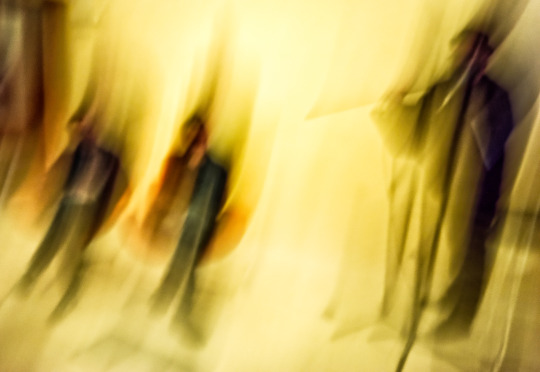
Ho riflettuto a lungo sulle cose da dire per iniziare questo dialogo con Davide Morgagni, a partire dal Rifiuto. È stato per me d’aiuto attraversare queste settimane leggendo l’Odissea, che ancora oggi traduce il senso di molte narrazioni e azioni odierne. Allo stesso modo cercando tracce del Mito nel Rifiuto, mi sono reso conto di come questa scrittura, per cominciare, sia profondamente innovativa e contemporanea, quindi – almeno dal punto di vista della narrazione – quasi del tutto non-mitica.
È una scrittura che trae origine da sé stessa, apparentemente senza influenze, eppure al centro di molte letture e “manomissioni” di classici della contemporaneità. Alcuni momenti della scrittura del Rifiuto sono molto vicini per stile e modalità di racconto alla scrittura di Solženicyn, Cărtărescu, Houellebecq.
Una volta praticata una struttura, una volta scoperti i meccanismi narrativi, è difficile far procedere un racconto senza farne uso, senza tuttavia dichiarare – a volte – la propria distanza dal narrare. La libertà è questo, narrare senza essere succubi della narrazione, dell’intrattenimento, cercando di affascinare, dare cioè una fascinazione, senza essere succubi anche del lettore. Per intenderci oggi ci sono autori che si mettono a scrivere pensando chi ci sia dall’altra parte più di quanto non pensino a utilizzare la penna come un bisturi per la descrizione all’esterno di proprie interiorità.
È un libro, «Il rifiuto» (Musicaos, Balbec, 1) tanto per cominciare, che può essere letto nell’ordine in cui volete. La composizione e la presentazione del volume sono cronologiche, perché è giusto tenere traccia di ciò che è stato, come è stato. La lettura è già il primo passo che il lettore può compiere autonomamente, perché i quattro episodi – le quattro unità di tempo che giocano il loro ruolo – sono distinti. Allo stesso modo non è detto che debbano essere lette in tempi simili, vicini, o – per assurdo – che debbano essere lette tutte.
Si può leggere «Finché c’è rabbia», per intenderci, e poi «Strade negre», lasciando trascorrere anche dei mesi. Oppure si può leggere «La nebbia del secolo», per avere ancora oggi uno spaccato odierno dell’odio e della tensione politica che agitano le razze di tutto il continente. È un atto di libertà, perché bisogna essere liberi per concepire, e anche per realizzare, un’opera simile.
C’è un tema poi, che quando entra nella scrittura contemporanea lo fa spesso con prurito per chi scrive superiore al prurito di chi legge o scosta lo sguardo, ed è il tema della povertà. La povertà è una realtà scomoda che la scrittura non osa affrontare, la povertà che bussa alla porta, la povertà di mezzi, la povertà dell’istruzione, tutte le povertà che ci si avvicinano nel corso dell’esistenza. Sono felice che parliamo in questo luogo (Lecce, Biblioteca OgniBene, ex Convento degli Agostiniani) di questo libro perché «Finché c’è rabbia» è ambientato a poche centinaia di metri da qui, in questo quartiere, dall’altro lato della strada, a Santa Rosa. Ed è un gesto politico raccontare quello che è successo nel quartiere di Santa Rosa durante il periodo del lockdown.
Ma faccio un esempio facendo un passo indietro, al Dostoevskij dei Fratelli Karamazov. C’è un episodio in cui Alëša, che è entrato come novizio in un monastero, passeggia in paese e nota da lontano una banda di sei ragazzini, avvicinandosi trova un pretesto per iniziare a parlare con alcuni di loro, notando che ognuno di essi ha una pietra in mano e che tutti stanno guardando dall’altra parte del canale, dove un altro bambino, tra i nove e i dodici anni – scopriremo averne nove – è bersaglio della loro sassaiola e delle loro angherie. Non solo, a un certo punto tra il gruppo il bambino dall’altra parte del canale, inizia una sassaiola, anche Alëša a un certo punto, viene colpito, finché non passa dall’altra parte per prendere le difese del bambino solitario.
«Il ragazzo lo aspettava, senza muoversi di un solo passo. Una volta vicino, Alëša si ritrovò davanti un ragazzo di nove anni appena, debole e mingherlino, con un visetto allungato, pallido e magro, e due grandi occhi scuri che lo guardavano astiosamente. Indossava un vecchio cappottino logoro, mostruosamente corto per la sua età. Le braccia nude gli spuntavano dalle maniche. Sui suoi calzoni spiccava una larga toppa, in corrispondenza del ginocchio destro, mentre il suo stivale destro, proprio sull'alluce, aveva un buco, accuratamente annerito con dell'inchiostro. Entrambe le tasche del cappotto erano gonfie, colme di pietre. Alëša si fermò davanti a lui, a due passi di distanza, con uno sguardo interrogativo. Il ragazzo, avendo subito compreso dagli occhi di Alëša che egli non intendeva picchiarlo, dismise quella sua aria insolente e anzi cominciò a parlare per primo».
(I fratelli Karamazov / Fedor Michajlovic Dostoevskij ; introduzione di Vittorino Andreoli ; traduzione di Pina Maiani e Laura Satta Boschian ; note a cura di Ettore Lo Gatto; Milano, BUR, 2026, p. 236)
Sui Karamazov, in modo emblematico, viene posto quasi sempre l’accento sul rapporto col padre, sul parricidio (vero o presunto che sia), sulla “Parabola del Grande Inquisitore”, che forse è uno degli episodi più sopravvalutati del libro, il che ci fa intendere quanto scalpore possa avere portato e porti sempre l’opera di Dostoevkij negli ambienti religiosi. Quello che è importante, però, in questo autore, è la descrizione delle persone da vicino, della loro umanità e realtà.
La scrittura, oggi, è borghese, è perbenista, è politically correct, è calmierata, è tranquilla. La scrittura del Rifiuto non è borghese, non è perbenista, non è politically correct, non è calmierata, non è tranquilla. Non c’è una sola riga tuttavia, in questi quattro romanzi, che non sia sorvegliatissima. Non c’è una sola pagina che non sia stata scritta e riscritta per giorni, settimane, mesi. È importante sottolinearlo perché questo tipo di scrittura ottiene, grazie allo stile, l’effetto di tenere l’attenzione del lettore sempre alta, nell’attesa di qualcosa che deve accadere e che viene sempre scagliato un poco avanti, ancora avanti.
Il richiamo della letteratura al mito della classicità è un fenomeno più o meno manifesto, a tempi alterni. Quello che c’è di più interessante, tuttavia, al di là del meccanismo, della struttura o dello stile, sono i meccanismi di potere che vengono nascosti in una scrittura. Faccio un esempio che attinge sempre all’Odissea. Quando Odisseo si è svelato a Penelope, e lei ancora non crede che l’uomo che ha fatto ritorno sia l’uomo partito venti anni orsono, egli le descrive la struttura del talamo nuziale, ricavato intagliando un ulivo all’interno della camera da letto. Quando è Laerte a non credere all’identità del figlio, nell’ultimo canto, quando Odisseo va a trovare il padre in campagna, è la descrizione della terra e del numero di alberi, ulivi, peri, viti, piantate che fa riconoscere il figlio al padre. L’amore per la moglie passa attraverso il luogo dove si è consumato, e l’amore del padre attraverso la terra. Sono due esempi di come il rapporto viene raccontato mediante il possesso di oggetti.
Il personaggio del «Rifiuto» non intende intrattenere rapporti con il potere né con gli oggetti, nel Rifiuto accade molto raramente che il protagonista di rapporti agli oggetti in termini di qualcosa all’esterno da sé, né intende avere rapporti egotici con i surrogati e le manifestazioni che la società contemporanea utilizzano per mascherare un’autenticità che non esiste.
Il Rifiuto è un richiamo a una forma di ascesi che non è né laica né religiosa, e si concretizza con l’esercizio ostinato di una perfezione interiore raggiunta con virtù e disciplina.
[Lecce - Biblioteca OgniBene - 3 maggio 2024 - Durante l’incontro il regista e attore Simone Franco ha letto estratti da «Strade negre», secondo romanzo del Rifiuto]
0 notes
Text
Akşam yemeği saatinde, restoranlar dolu oluyordu; sokaktan geçerken, izne çıktığı için sürekli ölüm tehlikesinden altı günlüğüne kurtulmuş, siperlere dönmek üzere olan zavallı bir askerin bir an durup aydınlık camekanlara baktığını görürsem, Balbec Oteli'nde balıkçıların bizi akşam yemeğinde seyrettiği zamanki gibi ıstırap çekiyordum; ama ıstırabım daha büyüktü, çünkü askerin sefaletinin, yoksulunkinden fazla olduğunu, sefaletin her türlüsünü içinde barındırdığını biliyordum; askerin sefaletinde ayrıca daha fazla tevekkül, daha fazla asalet vardı, savaşa dönmek üzere olan asker, itişip kakışarak bir masa kapmaya çalışan uyanıkları görünce, nefret duymadan, filozofça · başını sallayarak, “Savaş buraya hiç uğramamış sanki,” dediği için, daha da dokunaklıydı.
-Proust, Yakalanan Zaman
12 notes
·
View notes
Text
But to me, less of an artist than Saint-Loup, the pleasure that an attractive house could give was superficial, almost non-existent, and could not calm my growing anguish, as painful as that which I used to feel long ago at Combray when my mother did not come upstairs to say good night, or that which I felt on the evening of my arrival at Balbec in the room with the unnaturally high ceiling, which smelt of flowering grasses. Saint-Loup read all this in my fixed gaze.
— Marcel Proust, The Guermantes Way
0 notes